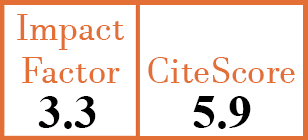Full Papers
Polypharmacy and comorbidities are not higher at diagnosis in patients with polymyalgia rheumatica compared to osteoarthritis
M.A. Cimmino1, D. Camellino2, P.V. Clini3, M. Cutolo4, E. Hysa5
- Laboratory of Experimental Rheumatology and Academic Division of Clinical Rheumatology, Department of Internal Medicine, University of Genova, Italy. marcoamedeo.cimmino@gmail.com
- Division of Rheumatology, La Colletta Hospital, Azienda Sanitaria Locale 3, Arenzano, Italy.
- Laboratory of Experimental Rheumatology and Academic Division of Clinical Rheumatology, Department of Internal Medicine, University of Genova, Italy.
- Laboratory of Experimental Rheumatology and Academic Division of Clinical Rheumatology, Department of Internal Medicine, University of Genova; and IRCCS Ospedale Policlinico San Martino, Genova Italy.
- Laboratory of Experimental Rheumatology and Academic Division of Clinical Rheumatology, Department of Internal Medicine, University of Genova; and Department of Experimental Medicine (DIMES), University of Genova, Italy.
CER18699
2025 Vol.43, N°11
PI 1911, PF 1916
Full Papers
Free to view
(click on article PDF icon to read the article)
PMID: 40470550 [PubMed]
Received: 09/03/2025
Accepted : 12/05/2025
In Press: 30/05/2025
Published: 11/11/2025
Abstract
OBJECTIVES:
Polypharmacy, the prescription of multiple drugs for an individual patient, is increasing in ageing individuals with comorbidities. In polymyalgia rheumatica (PMR), an inflammatory disease of the elderly causing pain and stiffness in the girdles, cardiovascular disease and lymphoproliferative disorders could be increased. Our study evaluated polypharmacy and comorbidities in PMR patients at diagnosis.
METHODS:
Patients fulfilling the 2012 EULAR/ACR criteria for PMR and sex and age-matched controls with hand osteoarthritis (OA) were evaluated. The Rheumatic Diseases Comorbidity Index (RDCI) was used.
RESULTS:
84 PMR patients (mean age 73.4±9 years, 65.1% women) and 84 controls (mean age 72.4±8.2, 65.1% women) were studied. The mean number of drugs assumed by PMR patients was 2.7±2.3 versus 3.1±2.5 of controls (p=0.168). Sixteen PMR patients versus 5 controls had no treatment, 56 vs. 67 took 1-5 drugs, and 12 versus 12 >5 drugs (p=0.03). PMR patients with hip pain assumed less drugs (p=0.008) and those with morning stiffness (MS) >45 minutes assumed more drugs (p=0.001). The mean RDCI was 1.56±1.29 in PMR patients and 1.51±1.38 in controls (p=0.62). The number of drugs assumed and RDCI significantly correlated (p<0.001), and both were directly associated with age (p<0.001). At multiple logistic regression, age (p=0.004) and MS (p=0.025) directly, whereas hip pain (p=0.008) and fever (p=0.015) indirectly predicted number of drugs assumed. Age (p<0.001) and white blood cells (p=0.011) directly, whereas fever (p=0.024) indirectly predicted RDCI.
CONCLUSIONS:
At the time of diagnosis, PMR patients do not show an increased comorbidity index nor number of drugs assumed compared to OA controls.



